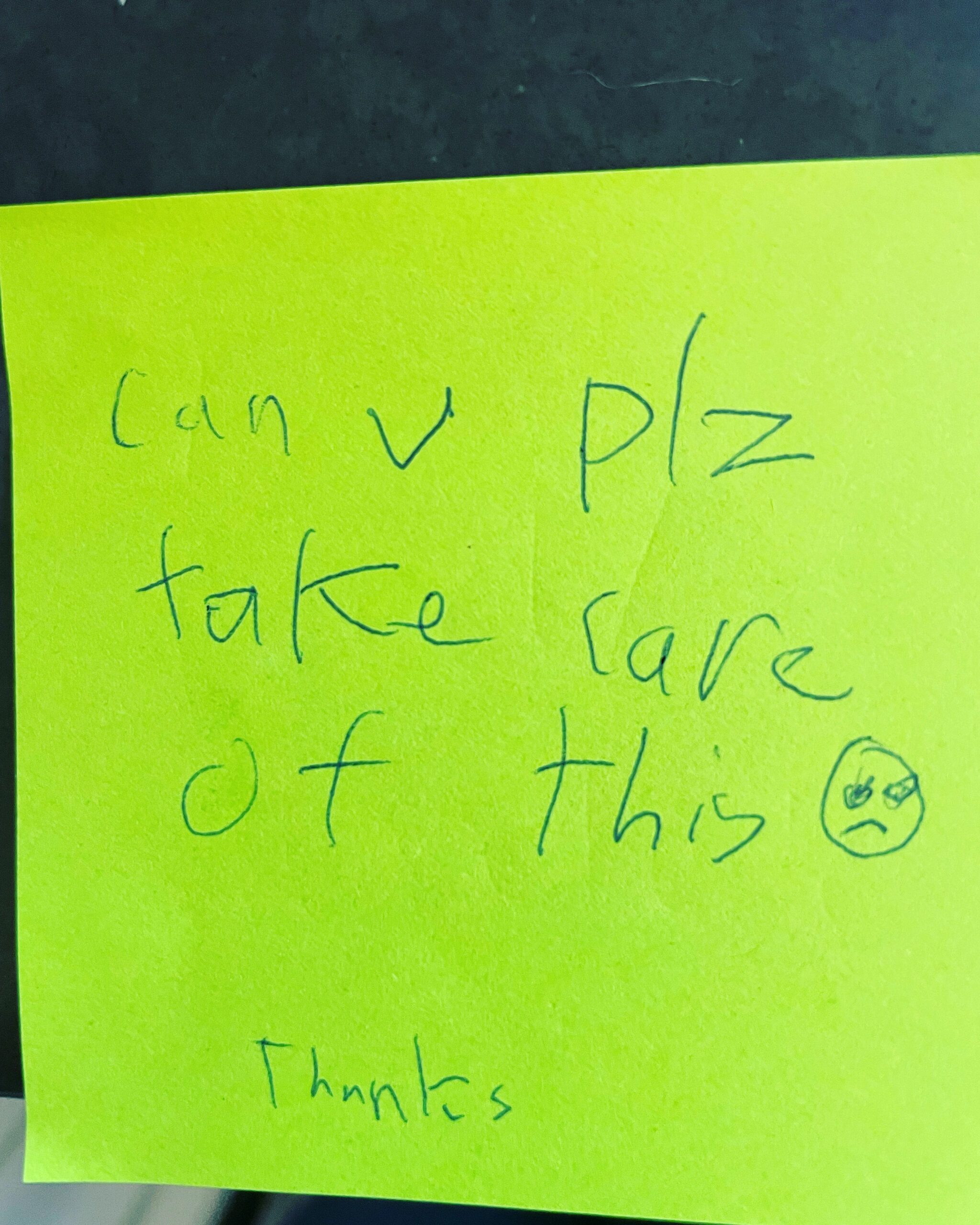My 9-year-old son recently left a note on his dirty breakfast dishes:
Can u pls take care of this ☹️Thanks
The fact you must know is that he placed the dishes on the counter right above the dishwasher. The ultimate in lazy maneuvers. I mean, writing the note took him longer than putting the dishes away!
While this provided a great laugh over on social media, it got me thinking about the primal nature of laziness and how it shows up in our organizations.
We see laziness as the customer service rep who can’t be bothered to listen to your real issue and look into possible options. It’s just easier to tell you nothing can be done.
We see it in the leader who claims that adopting a more empathetic approach is too hard and takes too much time and then falls back on the old ways of doing things. Which are dying, BTW.
We see it in the colleague who decides getting to know other team members is a “waste of time” and forgets the importance of building relationships and connections in order to get things done.
So that is the answer? Here are some options leaders like to think they have:
- We outsource empathy to HR
- We outsource empathy (hopefully) to AI
- We strengthen the muscle ourselves
Let’s parse these out:
Trying to outsource empathy to HR is like a parent trying to outsource love to their child’s teacher. It doesn’t make any sense. Do they outsource kindness, courage, and effective communication? The point of empathetic leadership is that your team members know you, their leader, have their backs and see, hear, and value them. That is the only way for you to reap the benefits of empathy, including increased engagement, performance, loyalty, and creativity. It needs to be woven into the way we interact with each other. It’s not a need I “go to” someone else to fulfill.
Trying to outsource empathy AI is trickier. There are empathic AI technologies available that are helping organizations strapped for resources or staffing to provide individualized guidance and interactions in industries such as healthcare, higher ed, and finance. But the organization’s leaders have to strengthen their own empathy in order to build it into the AI models and ensure the holistic customer experience is consistent and engaging.
Strengthening your own empathy is the smart choice. Just like going to the gym, you can build that innate human muscle if it has atrophied. You just need to put in the reps. This is why I wrote The Empathy Edge and speak at leadership trainings, keynotes, and customer events. To clarify what empathy looks like at work (and what it is most certainly NOT), and give you actionable tips to strengthen your empathy. The results may not be immediate (who gets six-pack abs on the first day at the gym?) but over time, this is the more sustainable option that you will carry with you to great success, no matter what team you’re leading or what role you are in.
If you’re tempted to outsource empathy, please think about the reason why.
Are you too scared or feel too vulnerable to connect with your people or customers with empathy? If so, you may need to do some work on your own strengths and blind spots. And what causes that fear. Is it insecurity, defensiveness, low self-esteem?
Are you strapped for time and overwhelmed? If so, perhaps prioritization is the issue and an understanding that the work of leading IS connecting and engaging with your people. If you don’t have time for that, you may need to reassess how you spend your time.
Do you think machines can “do it better?“ If so, who is teaching these machines? Where are the inputs coming from? And what happens when people interacting with AI dip in and out of workflow between humans and machines? We abhor inconsistency. That seems like a big risk you don’t need to take that could have catastrophic implications on your customer or employee experience. And also, no, to the question above. Empathy is an essential human trait about human connection. Machines will never be able to fully replicate it, even if they are able to imitate it in some scenarios.
Empathy is the most important leadership skill going into the 21st century. You can definitely augment empathy by shoring up your HR team and investing in empathic AI solutions. But you don’t want to outsource it without building it yourself because if you really believe that is possible, then you’re making yourself obsolete.
Photo Credit: Maria Ross












